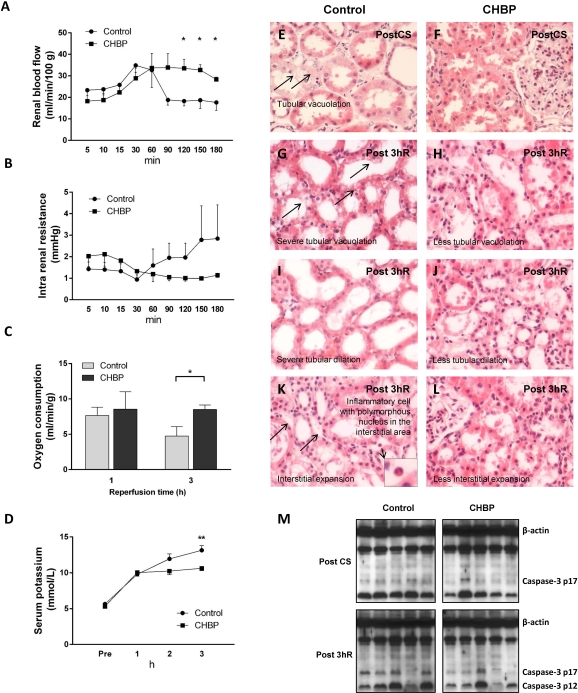CHBP in Preservation Solution and Autologous Blood Perfusate Ameliorates Ischemia Reperfusion Injury in Isolated Porcine Kidneys
1Urology, Zhongshan Hospital, Fudan University, Shanghai, China
2Transplant Group, Department of Infection, Immunity and Inflammation, University of Leicester, Leicester General Hospital, Leicester, China
3Shanghai Institute of Materia Medica, Chinese Academy of Sciences, Shanghai, China.
Meeting: 2015 American Transplant Congress
Abstract number: D102
Keywords: Donors, Ischemia, Kidney, non-heart-beating, Perfusion solutions
Session Information
Session Name: Poster Session D: Innate Immunity in Transplantation
Session Type: Poster Session
Date: Tuesday, May 5, 2015
Session Time: 5:30pm-6:30pm
 Presentation Time: 5:30pm-6:30pm
Presentation Time: 5:30pm-6:30pm
Location: Exhibit Hall E
Background. There is an imperative need to better preserve isolated organs before transplantation. A non-erythropoiesis cyclic helix B peptide (CHBP) derived from erythropoietin was newly developed by us, which has potent tissue protection and prolonged serum stability. The renoprotection and potential mechanism of CHBP were evaluated in a kidney preservation model.
Methods. Porcine kidneys subjected to 20-min warm ischemia were retrieved and flushed with hyperosmolar citrate to mimic deceased donation. The kidneys and autologous blood ± 10.56 nmol/L CHBP were cold stored (CS) for 18 hr. These kidneys were then normothermically hemoreperfused for 3 hr using an isolated organ perfusion system. The renal function and structure, apoptosis, inflammation, caspase-3 and HSP70 expression were assessed.
Results. CHBP significantly increased renal blood flow, oxygen consumption and urine output during reperfusion, but decreased serum potassium and renal tissue damage. Apoptotic cells were significantly decreased in tubular areas, but increased in lumens and interstitial areas in the post-CS and post-reperfused kidneys, whereas myeloperoxidase+ cells were reduced. In addition, the expression of 32-kD caspase-3 precursor, 12 and 17-kD active subunits was down-regulated by CHBP in reperfused kidneys, while the 12-kD subunit was also decreased in the post-CS kidneys. However, HSP70 was up-regulated in both post-CS and post-reperfued kidneys treated with CHBP.
Conclusions. CHBP administrated into the solution of preservation and reperfusion ameliorated renal ischemia reperfusion injury, which might be associated with decreased apoptosis, inflammation and caspase-3, but increased HSP70. This novel preservation approach using CHBP may be applied in kidney and other organ donors clinically.
To cite this abstract in AMA style:
Yang C, Hosgood S, Carly H, Meeta P, Long Y, Zhu T, Nicholson M, Yang B. CHBP in Preservation Solution and Autologous Blood Perfusate Ameliorates Ischemia Reperfusion Injury in Isolated Porcine Kidneys [abstract]. Am J Transplant. 2015; 15 (suppl 3). https://atcmeetingabstracts.com/abstract/chbp-in-preservation-solution-and-autologous-blood-perfusate-ameliorates-ischemia-reperfusion-injury-in-isolated-porcine-kidneys/. Accessed December 14, 2025.« Back to 2015 American Transplant Congress
